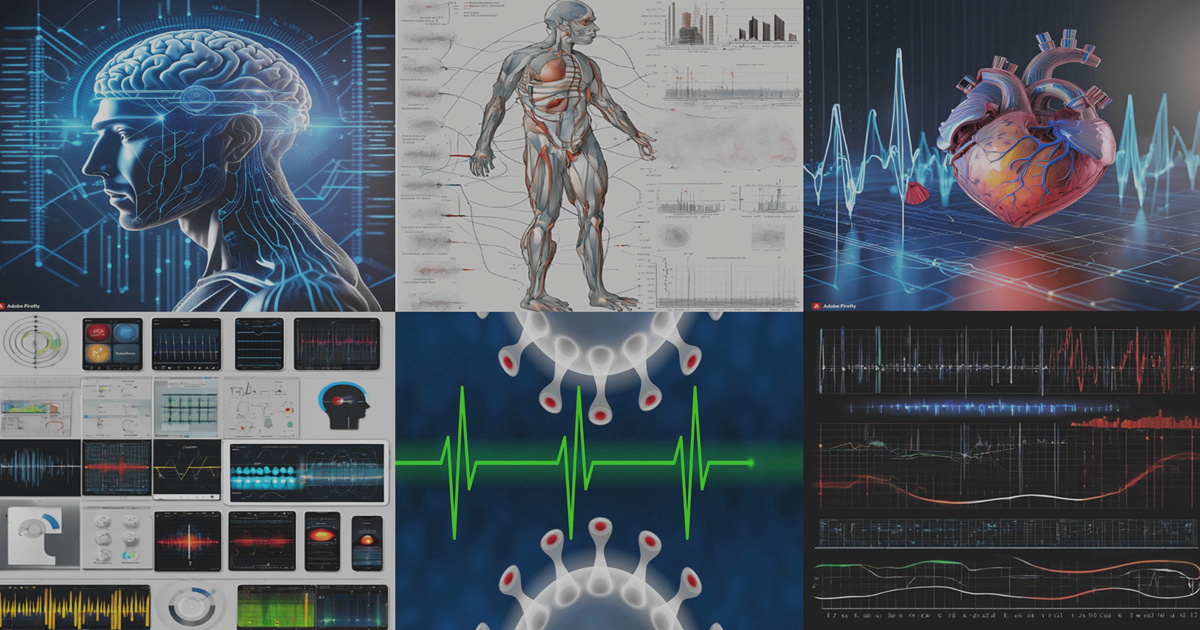Evolutionary Computation in Biomedical Signal Processing
A special issue of Applied Sciences (ISSN 2076-3417). This special issue belongs to the section "Applied Biosciences and Bioengineering".
Deadline for manuscript submissions: 10 January 2025 | Viewed by 2246

Special Issue Editors
Interests: biomedical signal processing; biomedical imaging; machine learning; soft computing; control system; network theory; digital signal processing
2. Physiological Controls Research Center, Obuda University, 1034 Budapest, Hungary
Interests: fractional calculus; control engineering; biochemical engineering; biomedical engineering
Special Issues, Collections and Topics in MDPI journals
Special Issue Information
Dear Colleagues,
Our bodies are the silent conductors of a magnificent symphony. A complex orchestra of electrical signals plays within us, led by the brain's masterful direction, the rhythmic drumming of the heart, and the subtle whispers of our muscles. These intricate melodies, captured by biomedical tools like EEGs and ECGs, hold the key to unlocking the secrets of our health. However, just as a recording marred by static obscures the beauty of a masterpiece, traditional analysis methods often struggle with the inherent noise and complexities of biological data.
Enter the power of evolutionary computation, a revolutionary maestro for this biological symphony. Inspired by nature's grand design, these algorithms mimic the process of natural selection. Imagine a population of candidate solutions, like musical notes, competing and evolving through generations. Through a process akin to genetic remixing and mutation, these solutions refine themselves, seeking the perfect harmony that unlocks the hidden message within the signal. Unlike traditional methods bound by rigid assumptions, evolutionary computation offers a more fluid and adaptable approach. It allows the algorithms to discover solutions specific to each unique melody, the subtle variations within an individual's EEG, or the telltale tremors in an EMG. Furthermore, these algorithms excel at navigating the complex, non-linear relationships within the data, making them ideal for deciphering the intricate language of the body.
This Special Issue delves into this exciting frontier where evolutionary computation meets biomedical signal processing. We explore the established maestro, the genetic algorithm, alongside a range of promising understudies. Genetic programming, a virtuoso in its own right, can compose custom filters, extracting the purest notes from the biological symphony. Particle swarm optimization, inspired by the collective intelligence of a flock, tackles the challenge of removing unwanted noise, leaving a clear and uninterrupted melody. Differential evolution, with its keen eye for subtle variations, offers the potential for real-time analysis, ensuring the music is never missed. And finally, ant colony optimization, mimicking the collaborative pathfinding of ants, can segment the signal, revealing distinct movements within the body's complex choreography.
We invite researchers to join us in this exploration to unlock the full potential of evolutionary computation in revolutionizing healthcare. Let us use these algorithms to not only decipher the body's song but also compose a future of personalized medicine, where diagnosis and treatment are tailored to the unique melody of each individual.
Potential topics encompass, but are not confined to, the following:
- Evolutionary algorithms for signal feature selection.
- Genetic programming for filter optimization.
- Evolutionary optimization of neural networks.
- Swarm intelligence for parameter tuning.
- Differential evolution for artifact removal.
- Evolutionary optimization of wavelets.
- Genetic algorithms for EEG analysis.
- Particle swarm optimization in cardiovascular signals.
- Evolutionary computation in medical imaging.
- Ant colony optimization for feature extraction.
- Genetic programming for automated diagnosis.
- Evolutionary optimization in wearable devices.
- Multi-objective optimization for healthcare.
- Evolutionary algorithms for time–frequency analysis.
- Cultural algorithms for bioacoustic signals.
- Hybrid evolutionary algorithms in bioinformatics.
- Evolutionary techniques in biomedical imaging.
- Genetic programming for event detection.
- Evolutionary optimization of deep learning.
- Biogeography-based optimization in signal models.
Dr. Hari Mohan Rai
Prof. Dr. Eva H. Dulf
Guest Editors
Manuscript Submission Information
Manuscripts should be submitted online at www.mdpi.com by registering and logging in to this website. Once you are registered, click here to go to the submission form. Manuscripts can be submitted until the deadline. All submissions that pass pre-check are peer-reviewed. Accepted papers will be published continuously in the journal (as soon as accepted) and will be listed together on the special issue website. Research articles, review articles as well as short communications are invited. For planned papers, a title and short abstract (about 100 words) can be sent to the Editorial Office for announcement on this website.
Submitted manuscripts should not have been published previously, nor be under consideration for publication elsewhere (except conference proceedings papers). All manuscripts are thoroughly refereed through a single-blind peer-review process. A guide for authors and other relevant information for submission of manuscripts is available on the Instructions for Authors page. Applied Sciences is an international peer-reviewed open access semimonthly journal published by MDPI.
Please visit the Instructions for Authors page before submitting a manuscript. The Article Processing Charge (APC) for publication in this open access journal is 2400 CHF (Swiss Francs). Submitted papers should be well formatted and use good English. Authors may use MDPI's English editing service prior to publication or during author revisions.
Keywords
- biomedical signals
- evolutionary computation
- natural selection
- genetic algorithms
- machine learning
- biomedical data analysis
- personalized medicine
- signal processing
- real-time analysis
- medical diagnosis
Benefits of Publishing in a Special Issue
- Ease of navigation: Grouping papers by topic helps scholars navigate broad scope journals more efficiently.
- Greater discoverability: Special Issues support the reach and impact of scientific research. Articles in Special Issues are more discoverable and cited more frequently.
- Expansion of research network: Special Issues facilitate connections among authors, fostering scientific collaborations.
- External promotion: Articles in Special Issues are often promoted through the journal's social media, increasing their visibility.
- e-Book format: Special Issues with more than 10 articles can be published as dedicated e-books, ensuring wide and rapid dissemination.
Further information on MDPI's Special Issue polices can be found here.






